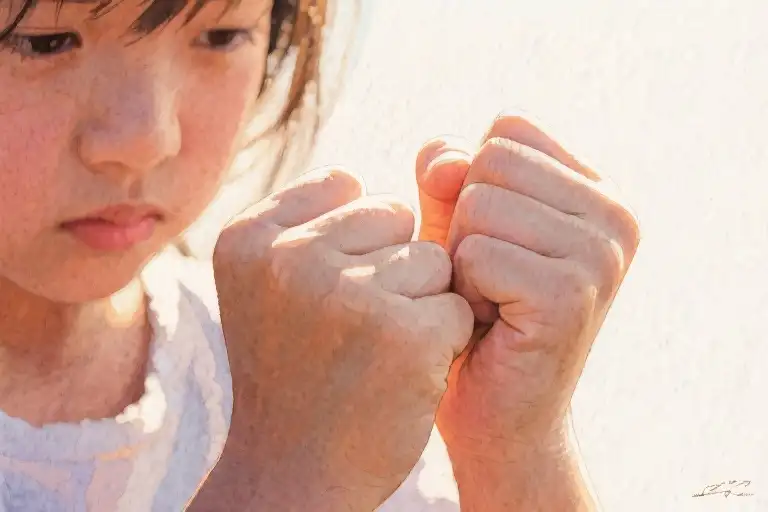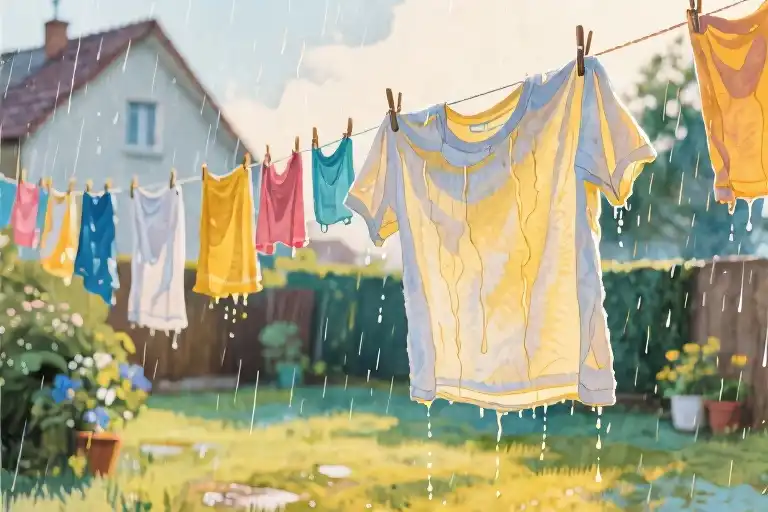“What’s wrong with you?” my teacher had asked, half in disbelief. The words hung in the air like an accusation, heavy with implications I couldn’t yet understand at eight years old.
It started like any ordinary schoolyard conflict. A bully had pushed me first, called me names, laughed when tears welled up in my eyes. So I pushed back – one instinctive shove that sent him stumbling. No bruises, no blood, just the kind of scuffle children have navigated for generations. Yet when the teacher arrived, the question wasn’t directed at the boy who initiated the confrontation. It was aimed squarely at me, the one who dared to defend herself.
I remember how my small hands clenched into fists at my sides, fingernails biting into my palms. My heart raced like a trapped bird against my ribs as I stood frozen under that questioning gaze. In that moment, something fundamental shifted in my understanding of justice. Why was standing up for myself suddenly the transgression? Why did my act of self-preservation warrant scrutiny while his aggression went unchallenged?
This early lesson in victim blaming settled deep in my bones, a bitter taste I wouldn’t fully comprehend until years later. The memory of that disproportionate reaction – the way authority figures instinctively questioned my response rather than his provocation – planted the first seeds of understanding about how society often treats those who dare to resist mistreatment.
That childhood incident became my first encounter with a pattern I’d see repeated throughout life: the uncomfortable truth that speaking up often draws more criticism than the original offense. It’s a dynamic that plays out in schoolyards and boardrooms, on public transportation and private messages – this reflexive questioning of victims rather than perpetrators. The eight-year-old me couldn’t articulate it then, but the injustice of that moment became a compass needle pointing toward deeper questions about power, gender, and the social scripts we’re expected to follow.
Looking back, I recognize how that ordinary Tuesday afternoon became extraordinary not because of the schoolyard scuffle, but because of the revealing question that followed. “What’s wrong with you?” implied something broken in my reaction rather than his action. It suggested my self-defense required explanation while his aggression didn’t. This subtle but profound imbalance would shape my understanding of confrontation, justice, and the courage required to stand up for yourself in a world that often punishes those who do.
The First Time: Silence at Eight
“What’s wrong with you?” The words hung in the air like an accusation. At eight years old, I didn’t yet understand why defending myself had suddenly become the problem.
It started like any ordinary schoolyard conflict. A boy – taller, louder, the kind who always needed an audience – had been calling me names all week. That day, he pushed me hard enough to make me stumble. When I began crying, he laughed. So I pushed back. Just once. Just enough to make him lose his balance and fall onto the grass.
No bruises. No blood. Just two kids in a momentary struggle for dignity. Yet when the teacher arrived, her question wasn’t for the boy who’d started it. Her narrowed eyes locked onto me as she demanded, “What’s wrong with you?”
My small hands clenched into fists at my sides. I remember how my heart pounded against my ribcage, how my throat tightened until breathing became difficult. The late afternoon sun felt suddenly too bright, the chatter of other children too loud. Most of all, I remember the crushing weight of that question – not just the words, but everything they implied.
Why was standing up for myself wrong?
Why was I the one being questioned?
In that moment, a dangerous lesson took root: that speaking up might bring more trouble than staying silent. That the act of self-defense could somehow make me the transgressor. For years afterward, I’d replay that scene, analyzing every detail, wondering if I’d missed some unspoken rule about who gets to claim victimhood and who must accept blame.
Childhood bullying often gets dismissed as “kids being kids,” but these early interactions shape our understanding of justice. When authority figures focus on the reaction rather than the provocation, they teach victims to doubt their own right to boundaries. That day on the schoolyard, I learned two conflicting truths simultaneously: that the world wouldn’t always protect me, and that protecting myself might come at a cost.
The irony? The boy who bullied me faced no consequences. No stern lectures about kindness. No notes sent home to parents. Just a hand pulling him up from the grass while I stood frozen under the weight of that question – a question that would echo in my mind for years to come.
Looking back now, I recognize this as my first encounter with victim blaming, that peculiar social phenomenon where we scrutinize the victim’s behavior instead of the perpetrator’s. Psychologists call it a coping mechanism – if we convince ourselves victims did something to “invite” harm, we maintain the illusion that bad things only happen to people who make mistakes. It’s a fragile armor against life’s randomness, but one that leaves lasting scars on those who internalize its message.
At eight years old, I lacked the vocabulary to articulate any of this. All I knew was the sickening twist in my stomach when the teacher’s disapproval landed on me alone. That moment planted seeds of doubt that would take years to uproot – about my worth, my voice, and who ultimately bears responsibility when lines get crossed.
The Second Time: Shouting at Thirteen
The bus smelled of stale coffee and diesel fumes when it happened. I was thirteen, wearing my school uniform—knee socks, pleated skirt, the same outfit every girl wore. Normal. Unremarkable. Until his hand slid under the fabric like a serpent, fingers creeping upward while my body turned to stone.
The Moment Everything Changed
My lungs forgot how to breathe. The world narrowed to three sensations:
- The prickling heat crawling up my neck
- The cold metal seat pressing into my thighs
- That invasive touch moving higher
A voice in my head screamed: This isn’t happening. But another, louder one answered: It is. And you can stop it.
Finding My Voice
Then came the sound I’ll never forget—my own voice, sharp as shattered glass:
“HEY!”
The entire bus froze. Heads snapped toward us. His fingers jerked away as if burned. In his widened eyes, I saw something priceless: shock. The kind reserved for people who assume silence is guaranteed.
The Aftermath
He muttered something unintelligible and shoved toward the exit at the next stop. No one followed him. No one asked if I was okay. But for the first time, no one asked “What’s wrong with you?” either.
Why This Time Was Different
At eight, I’d internalized the message that self-defense was wrong. At thirteen, I understood the deeper truth:
- The real question wasn’t why I shouted—it was why he thought he could touch me
- The real power came from disrupting the script of victimhood
- The real growth happened when fear transformed into fuel
That day, I didn’t just reclaim space on a bus seat. I reclaimed ownership of my body, my voice, and my right to stand up for myself without apology.
Funny how one shouted word can unravel a predator’s entire playbook.
Why Do We Blame the Victim?
That question – “What’s wrong with you?” – haunted me for years. Not because I didn’t know the answer, but because it was asked to the wrong person. When society points fingers at victims instead of perpetrators, it reveals uncomfortable truths about power, gender, and our collective discomfort with confronting injustice.
The Psychology Behind Victim Blaming
Research shows victim blaming serves as a psychological defense mechanism. A University of Michigan study found that when people believe “bad things only happen to those who deserve it,” they create an illusion of personal safety. This “just-world hypothesis” explains why my teacher focused on my reaction rather than the bully’s actions – accepting that innocent children get hurt randomly would shatter her sense of control.
Victim blaming also thrives in ambiguity. The #MeToo movement demonstrated how perpetrators often manipulate gray areas – “Was it harassment or just flirting?” “Did she overreact?” My bus incident contained no ambiguity – a grown man’s hand under a child’s skirt – yet bystanders initially hesitated. Their discomfort wasn’t about uncertainty; it was about disrupting social norms.
Gender and Power in Public Spaces
Public harassment statistics paint a grim picture:
- 81% of women experience sexual harassment by age 17 (UN Women)
- Only 25% of victims report incidents, fearing disbelief or blame (RAINN)
These numbers reflect deeper power dynamics. From childhood, girls receive contradictory messages: “Be assertive but not aggressive,” “Stay safe but don’t limit yourself.” When I shouted on that bus, I violated the unspoken rule that women should endure discomfort quietly to avoid “making a scene.”
Cultural Scripts We Inherit
Consider how we frame these conversations:
- “Why were you out so late?” instead of “Why did he attack?”
- “What were you wearing?” rather than “Why did he feel entitled?”
These patterns start early. My eight-year-old self learned that defending boundaries invited punishment, while the bully faced no consequences. By thirteen, I understood this wasn’t about right or wrong – it was about who society protects and who it questions.
Breaking the Cycle
Changing this narrative requires conscious effort:
- Language matters: Replace “Why didn’t you…” with “How can we support you?”
- Believe first: Assume good faith in victims’ accounts
- Redirect accountability: Ask “What made him think this was acceptable?”
As author Jessica Valenti notes: “The cultural habit of treating male violence as inevitable while policing women’s behavior isn’t protection – it’s permission.” My story isn’t unique, but each time we question victim-blaming narratives, we make space for real change.
From Fear to Action: A Practical Guide
That moment on the bus when my voice finally broke free taught me something crucial: fear doesn’t disappear—we learn to move through it. Here’s what I wish someone had told me at eight, at thirteen, and what you might need to hear today.
1. The Three-Second Rule: Interrupting Harassment
When someone crosses your boundaries, your brain often freezes. That’s normal. What helped me was practicing the three-second rule:
- Second 1: Breathe deeply through your nose (this calms your nervous system).
- Second 2: Ground yourself (press your feet into the floor or grip your bag strap).
- Second 3: Speak or move—a loud “NO,” stepping away, or drawing attention (“This man is touching me!”)
Why it works: Research shows that harassers rely on surprise and silence. Any immediate reaction—even coughing loudly—disrupts their script.
2. Document Like a Journalist
After my bus incident, I scribbled everything in my phone:
- Time/Location: “4:15 PM, Bus #29 near Maple St.”
- Description: “Tall man, red cap, blue backpack with NASA patch”
- Witnesses: “Woman in yellow scarf saw everything”
This isn’t paranoia—it’s empowerment. Documentation helps if you decide to report later. Apps like Circle of 6 let you discreetly alert contacts with your location.
3. Build Your Support Toolkit
Here’s what I keep handy now:
- Emergency Contacts: Saved under “ICE” (In Case of Emergency) in my phone
- Local Resources:
- National Sexual Assault Hotline: 800-656-HOPE
- RAINN.org for live chat support
- Hollaback!‘s bystander training videos
- Comfort Items: A playlist titled “Aftermath” with calming songs, peppermint oil (smell anchors during panic)
Practice Makes Presence
I role-play with friends monthly—it sounds silly until you need it. We take turns being the harasser/victim/bystander, practicing:
- Firm voice tones (“Stop. Now.”)
- Body language (standing tall, making eye contact)
- Bystander phrases (“Hey, are you okay?” to disrupt situations)
When You Can’t React in the Moment
Sometimes fear wins. That’s human. Later, try:
- Writing an unsent letter to the harasser (gets anger out safely)
- Calling a support line just to vent
- Reporting anonymously via apps like SafeUP
Remember: Your worth isn’t defined by any single moment. Like my therapist says, “The goal isn’t fearlessness—it’s knowing fear doesn’t get the final say.”
You’ve survived 100% of your worst days so far. That’s no accident.
From Silence to Strength: A Journey of Finding My Voice
Looking back now, I see the thread connecting those two moments – the eight-year-old girl frozen under her teacher’s disapproving gaze, and the thirteen-year-old who finally found the courage to shout. It wasn’t just about growing older; it was about understanding that the question “What’s wrong with you?” had never been mine to answer.
The Weight We Carry
Victims of harassment or bullying carry invisible burdens long after the incidents end. We memorize the exact shade of fluorescent lights in the principal’s office where we were scolded for defending ourselves. We can still feel the texture of bus seats where unwanted hands crept toward us. These memories don’t fade – they transform into something heavier if we don’t learn to lay them down.
What changed between those two moments wasn’t just my age. It was realizing:
- The problem had never been my reaction, but others’ actions
- Fear and courage aren’t opposites – they’re traveling companions
- My voice mattered more than keeping the peace
Changing the Conversation
We need to stop asking victims why they didn’t react “correctly” and start asking:
- Why do we make vulnerability seem like weakness?
- When did we decide comfort matters more than safety?
- How many “polite” silences have allowed harm to continue?
The man on the bus didn’t expect resistance. The bully expected tears, not pushback. Both counted on silence – the same silence our culture often rewards in women and children. Breaking that silence isn’t rudeness; it’s rewriting expectations.
Your Next Steps Matter
If you’re holding onto your own version of these moments:
- Name what happened – Write it down or tell someone you trust. Secrets lose power when spoken.
- Practice responses – Rehearse phrases like “Stop that” or “That’s inappropriate” until they feel natural.
- Find your people – Connect with organizations like RAINN (rainn.org) or StopBullying.gov for support.
This isn’t about living in anger – it’s about refusing to carry shame that was never yours. The next time someone implies there’s “something wrong” with how you reacted to being wronged, remember: the truest thing about you isn’t your fear, but the courage that exists alongside it.
Your story matters. Share it when you’re ready. And to anyone who’s ever been asked “What’s wrong with you?” when defending yourself – the only thing “wrong” was that you had to.





